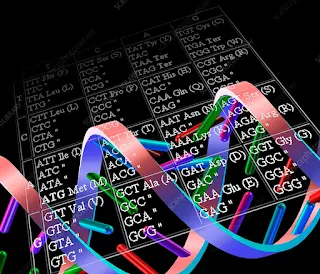Polymerase Chain Reaction
Polymerase Chain Reaction (PCR): Unveiling the Blueprint of Precision DNA Amplification
In the world of molecular biology, few techniques have had as profound an impact as the Polymerase Chain Reaction (PCR). This revolutionary process, developed in the mid-1980s by Kary B. Mullis, has transformed the field of genetics, medicine, forensic science, and countless other disciplines. By allowing scientists to amplify specific DNA sequences with incredible precision, PCR has unlocked new frontiers in research, diagnostics, and technology development.
Understanding PCR: The Molecular Copy Machine
At its core, PCR is a molecular copy machine that enables the rapid amplification of a specific segment of DNA. It achieves this through a repetitive cycling process that generates millions to billions of copies of the target DNA sequence. The beauty of PCR lies in its simplicity and versatility, making it a cornerstone technique in modern molecular biology laboratories.
The Components of PCR
PCR involves a few key components, each playing a critical role in the amplification process:
1. **DNA Template:** This is the original DNA containing the target sequence that needs to be amplified. It could be from various sources, including cells, tissues, or extracted DNA.
2. **Primers:** Short single-stranded DNA molecules that are complementary to the sequences flanking the target region. Primers serve as the starting points for DNA replication by the enzyme DNA polymerase.
3. **DNA Polymerase:** An enzyme responsible for synthesizing new DNA strands by adding complementary nucleotides to the primers. The heat-resistant enzyme Taq polymerase is commonly used in PCR.
4. **Nucleotides:** The building blocks of DNA, including adenine (A), thymine (T), cytosine (C), and guanine (G).
5. **Thermal Cycler:** A specialized machine that controls the temperature of the reaction mixture, facilitating the cycling process required for PCR.
The Polymerase Chain Reaction Steps
PCR involves a repetitive cycle of heating and cooling, designed to create copies of the target DNA:
1. **Denaturation:** The reaction begins by heating the DNA template to around 95°C, causing the double-stranded DNA to denature or separate into single strands.
2. **Annealing:** The temperature is lowered to around 50-65°C, allowing the primers to anneal or bind to their complementary sequences on the DNA template.
3. **Extension:** The temperature is raised to around 72°C, the optimal temperature for DNA polymerase to extend the primers by adding nucleotides complementary to the template strand.
These three steps together constitute one cycle of PCR. Each cycle doubles the amount of DNA, resulting in exponential amplification. By cycling through these steps multiple times, often around 20-40 cycles, millions of copies of the target DNA segment are generated.
Applications of PCR: From Research to Diagnostics
PCR's impact reverberates across various fields:
1. **Genetic Research:** PCR is an essential tool in genetic research, enabling scientists to study specific DNA regions, genes, mutations, and genetic diversity. It underpins advancements in genomics, evolutionary biology, and more.
2. **Forensic Science:** DNA fingerprinting, a technique used in forensics to identify individuals based on their DNA, relies heavily on PCR. It allows for the analysis of minute DNA samples found at crime scenes.
3. **Medical Diagnostics:** PCR-based tests have revolutionized medical diagnostics. Techniques like quantitative PCR (qPCR) and reverse transcription PCR (RT-PCR) aid in diagnosing infections, genetic disorders, and monitoring disease progression.
4. **Biotechnology:** PCR plays a pivotal role in biotechnology, enabling the creation of genetically modified organisms, gene cloning, and the synthesis of DNA for various applications.
5. **Environmental Science:** PCR is employed in environmental studies to detect and monitor microbial populations, identify species in complex ecosystems, and study microbial diversity.
6. **Ancient DNA Studies:** PCR has even been used to amplify and study DNA from ancient specimens, shedding light on historical genetic relationships and evolutionary processes.
**Challenges and Innovations**
While PCR has been revolutionary, it's not without challenges. Inhibitors from complex sample matrices, contamination risks, and limited amplification efficiency are some issues. However, these challenges have spurred innovation. Techniques like real-time PCR (qPCR) allow for quantitative analysis, while digital PCR offers enhanced precision in quantification.
**Conclusion: Illuminating the DNA Landscape**
The Polymerase Chain Reaction has indelibly altered the landscape of biology and technology. Its ability to rapidly and selectively amplify DNA segments has paved the way for advances across diverse fields. As technology evolves, PCR continues to adapt, providing researchers, clinicians, and innovators with the tools to explore the intricacies of DNA, decode genetic mysteries, and develop solutions that shape the world we live in. From diagnosing diseases to uncovering evolutionary histories, PCR has left an indelible mark on the scientific and technological tapestry of our time.





Comments
Post a Comment